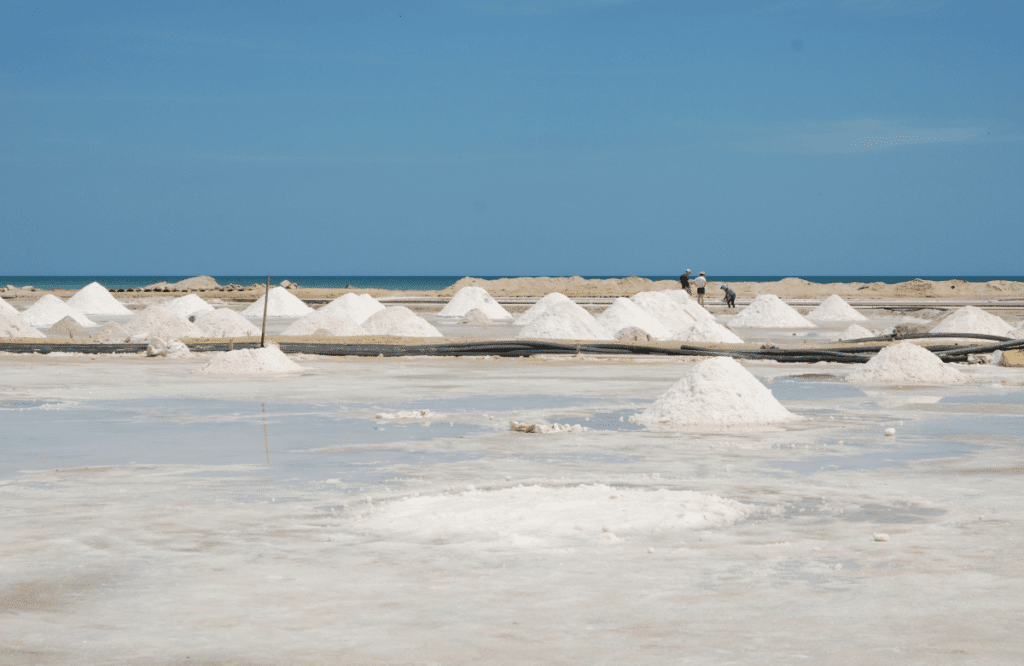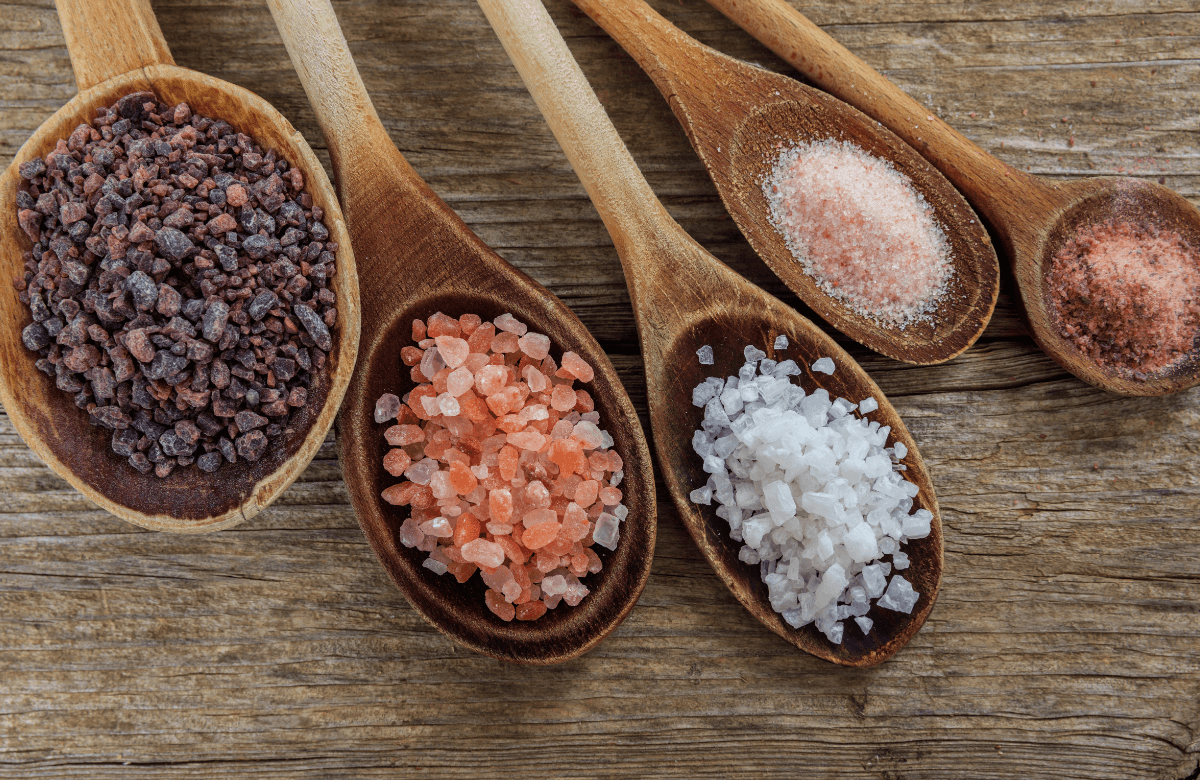For most people in the fitness world, drinking plain water alone may not be enough anymore. More strenuous workouts and routines have taken many athletes to their limits which means their bodies need to adapt.
Dehydration is a very common occurrence in long-distance sports and hot climates which is why salt intake has been gaining relevancy. This article will cover salt as a pre-workout and the benefits you didn’t know about.
Some of the benefits taking salt before workout include:
– Improve performance
– Electrolytes replenishment
– Preventing muscle cramps
Throughout the article, you’ll also know the type of salt, amount, and ideal timing for your sodium intake.
Let’s dive in!
Jump to:
What Is Salt?
To most people, salt is referred to as table salt, which contains 40% of Sodium (Na+) and 60% of Chloride (Cl-). It’s the white granular powder found in most houses and restaurants used for cooking.
In fact, almost every popular food sold on the streets is high in salt (salty foods). A few examples are nuts, popcorn, pretzels, and potato chips. Some people are known for eating a sodium diet mostly made out of these foods.
On top of that, salt is also considered an electrolyte due to its chemical composition. That would put it in the same realm as potassium, calcium, and magnesium, just to name a few.

Benefits of Salt Before Workout
Although excessive salt consumption (higher sodium levels) has been linked to high blood pressure and heart stroke, there are many benefits to consuming salt as a pre-workout.
However, it’s important to note that athletes and people that workout often, sweat more and for that reason lose more sodium, which is why taking more salt is still considered healthy for that population.
Improve Your Performance
For many years salt consumption has been linked to performance improvement. Although research is still inconclusive, some studies have shown a positive correlation, especially an increased time to exhaustion and performance in subsequent exercise bouts.
That is a reason why most (if not all) sports drinks and pre-workouts usually contain sodium in their formula. For example, Coles et al. suggested an oral sodium load (164 mEq Na+) equivalent to 10 ml per kilogram of body weight showed a 7.8% improvement in time trial performance.
Replenish Electrolytes

Drinking water alone is not enough to replenish electrolytes. In fact, plain water reduces plasma sodium concentration which is the opposite of what you’d want.
The addition of salt to your pre-workout drink will help maintain plasma sodium concentration and make it easier to rehydrate after any training session.
Athletes that train multiple times a day or for prolonged times need at least 2g/d of sodium just to replenish the physiological losses. It’s important to remember that you lose about 1g of sodium per hour of exercise which highlights the importance of salt in rehydration and fluid balance.
Support Body Temperature
The normal average body temperature for the human body is between 35.7 to 37.3°C (1) Although some extreme conditions may alter this such as long heat or cold exposures.
Salt (especially sodium component) takes water to the bloodstream which increases the total volume dissipating the heat throughout the body.
Prevent Muscle Cramps
According to Martinez-Navarro et al., exercise-associated muscle cramps (EAMC) are considered painful, spasmodic, and involuntary contractions of muscles during or after physical activity.
The main cause has been linked to electrolyte depletion through excessive sweat loss, and dehydration (2) Knowing this helps address it better, and salt consumption seems like a spot-on solution.
Consuming 1/2 or 1 teaspoon of salt (depending on the type and duration of the physical activity) previous to working out may aid in preventing muscle cramps.

How To Take Salt As A Pre-Workout
Although adding salt to any beverage is a relatively simple task, knowing the type, amount, and timing is of equal importance to take advantage of its benefits.
Type Of Salt
The three more famous types of salt are:
– Sea salt
– Himalayan salt
– Table salt
They come from different sources which concede them their slightly different properties. For example, sea salt is harvested from the ocean and salt lakes, table salt is taken from the earth, while Himalayan salt (pink salt) is mined from a sea in Pakistan near the Himalayan Mountains.
Although their origins are different, their properties are very similar. So similar that which one to take becomes a matter of personal preference. There’s no clinically relevant difference that puts one type of salt on top of the other.

Amount Of Salt
The amount of salt might be the most important factor to consider when it comes to rehydration. A little salt may not be of impact and too much may be dangerous. So, what’s the ideal amount?
The image below shows an approximate sodium content per tablespoon of salt.
Although the amount of salt varies from one person to another, from the type of physical activity, the duration, and even the weather and the time of the day, a general recommendation would be adding 1,200mg of sodium to your pre-workout drink.
From there you can measure whether you need to add more or less. Some people also take pre-workout supplements which already have added sodium and taste better than salty water. Although this will cost more, it’s still a great option for exercise performance.
Timing Of Salt
Once you have established the amount of salt to be ingested, the timing isn’t really that important. As long as you drink it between 20 min – 2 hours prior to your activity you should be ready to go.
Be mindful not to drink too much close to go time or you may risk experiencing indigestion or bloating.
Frequently Asked Questions
How Much Salt Should I Take For Pre-Workout?
As a general dosage, you could take 1/2 teaspoon (1,200 mg of Sodium) of salt 30 minutes prior to your workout. However, if you’re working out for longer periods (>2hrs) or at temperatures higher than 80 degrees F, then consider adding 1 teaspoon (2,400 mg of sodium.)
Does Salt Give You A Pump?
Yes, salt gives you a pump by pulling water into your bloodstream. That is one of the reasons why excessive salt consumption may cause high blood pressure in some individuals. However, this is beneficial when exercising because blood flow is distributed to the muscles.
Can I Use Himalayan Salt As Pre-Workout?
Yes, you can use Himalayan salt as a pre-workout. Compared to sea and table salt, the sodium content remains mostly the same, which ends up being a matter of preference.















